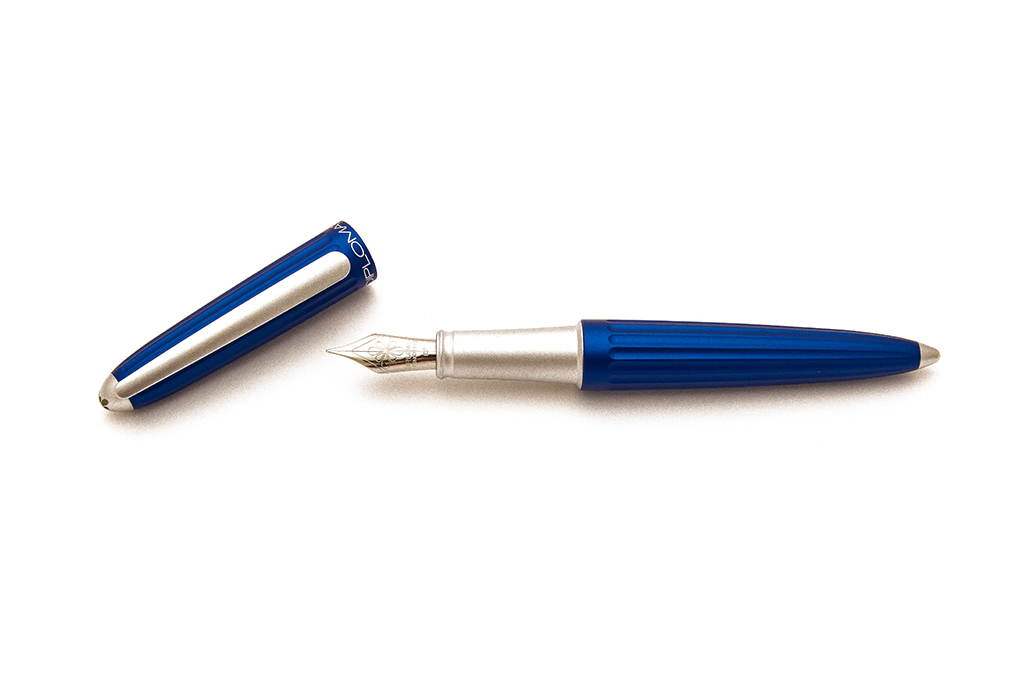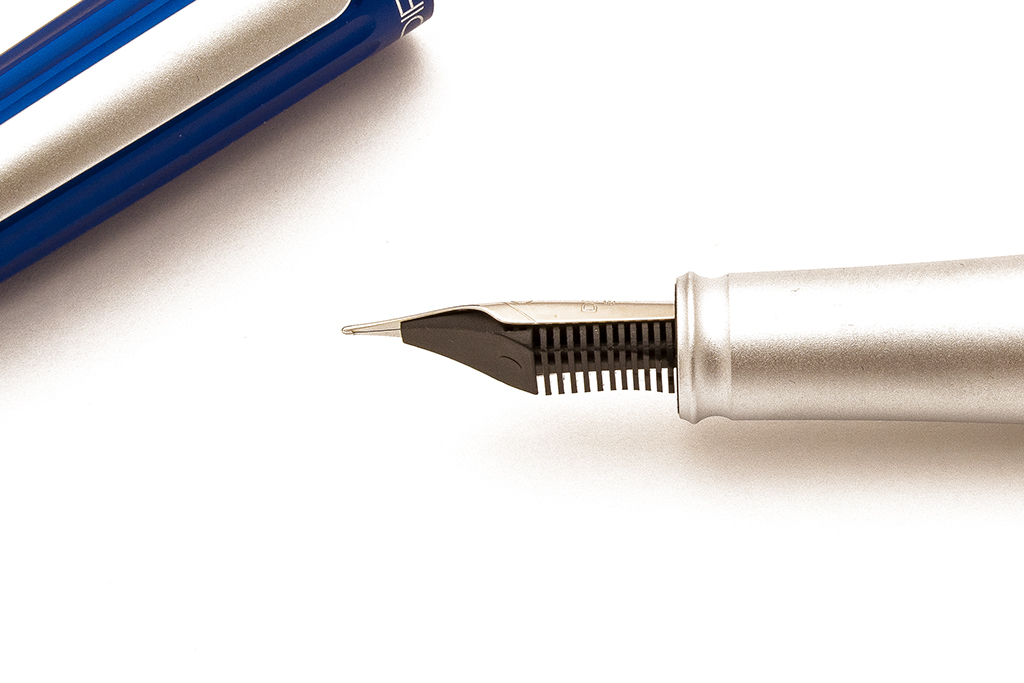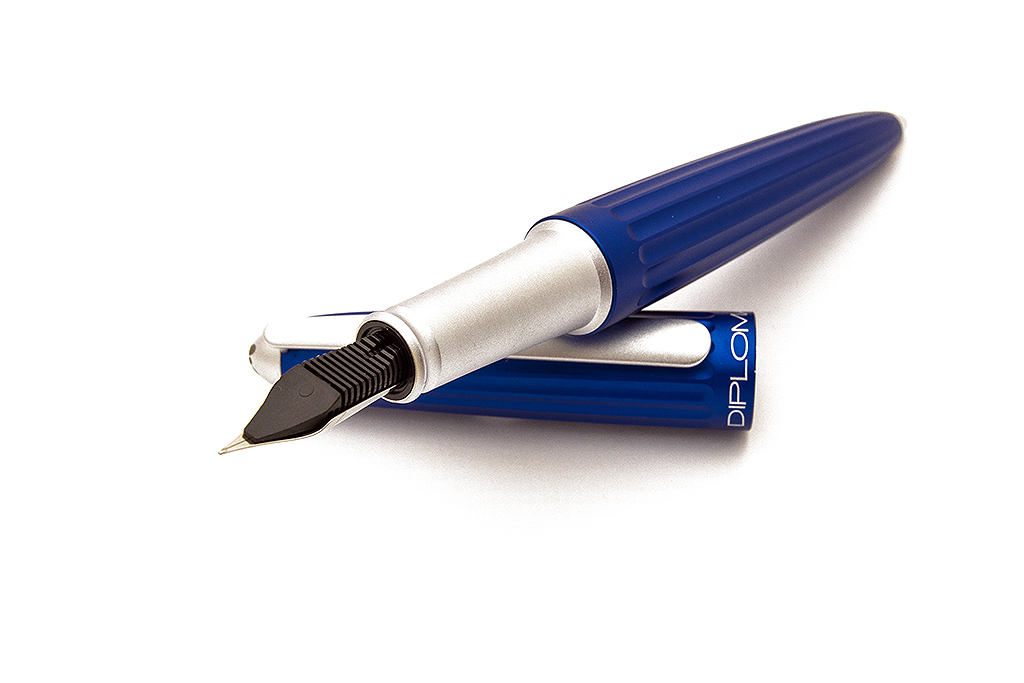Modern fountain pens come in all shapes and sizes but their anatomy remains more or less the same. In this series of articles, aimed at both novice and long time pen users, I shall explore exactly what makes a fountain pen… a fountain pen.
In principle every pen is the same. A barrel, a cap, a reservoir of ink and the business end, a nib that puts the ink on the paper.
But the devil is in the details, and there are a lot of them. So let’s explore the pen from the outside in.
The first thing that draws anyone to a pen is the barrel and cap. There are hundreds of different colours and materials designed to trap the unsuspecting pen enthusiast. Many pens come with ornate fittings including pretty cap bands, gems, jewels and clips.
Discussing the materials and patterns with which fountain pens are manufactured and finished would take a book in its own right. But the first commercially manufactured fountain pens were made with metals including steel, gold and silver.
Fountain pens were considered prestigious. A luxury item owned by the elite.
Ebonite (hard vulcanised rubber), acrylic, plastic, lacquer (a high gloss finish over metal) have taken their turn in popularity over the years and are still common barrel materials.
One of the most beautiful finishes has been created in Japan using a technique called Maki-e. Literally translated into English as sprinkled picture, Maki-e is an exquisite lacquer decoration technique.
This process of finishing a pen by sprinkling lacquer with gold and silver powder onto the barrel could take a master artist months. Adding other powdered metal produces different colour shades and glorious designs grace the owner each time they use the pen.
Pilot first introduced Maki-e pens in the 1920s and such pens are still being manufactured in limited quantities. A fountain pen from the Namiki range will cost you thousands of dollars.
Often forgotten, clips come in all sorts of shapes and sizes, from Visconti’s spring clip to Kaweco’s slip on Sport clip. The orientation of the clip usually means that a fountain pen nib points up when in a pocket (and so ink runs down) to reduce the chance of an unwanted ink event.
Removing the cap from the barrel, your eye will first catch the nib section.

The section is the part of the pen that the hand grips when writing. Simple in concept, it is central to the performance of a fountain pen.
The section provides a stable attachment point for the ink reservoir, feed and nib. The nib and feed are kept aligned in the section either by a screw mechanism or friction fit.
Some pens such as the Lamy Safari or TWSBI Eco-T provide a faceted section that allows the writer to comfortably place the fingers in the correct orientation for writing. Perfect for a novice or for a writer who wants a comfortable and reliable fit.
The nib is the business end of the fountain pen and sits pressed between the feed and the section. Some fountain pen manufacturers have designed ingenious mechanisms to make changing nibs a breeze.
The Lamy slip-on nib and the Kaweco threaded nib collar are two good examples.
Nibs can also be kept in place by pure friction between the feed and the section and manufacturers will tell you that removing the nib and feed is a bad idea. Truth be told, doing so can start a grand adventure in nib swapping.
The job of the feed is to control the flow of ink from the reservoir to the nib. It also allows air to flow back to replace the ink that is displaced. Think the glug of pouring water out of a bottle.

The feed also controls the flow of ink caused by external forces such as air pressure, temperature and humidity change, as well as running for the bus.
It does this by with the use of combs that are cut into the sides of the feed. These combs or fins wick excess ink caused by capillary action, stopping a literal flood of activity.
You may see a feed without combs. In fact combs or buffers will be hidden in the nib section.
The nib touches paper and deposits ink on its surface and the thickness of the line is dictated by the width of the nib and pressure exerted by the writer. Paper is also an important factor in determining how thick the line will be.
Standard modern nibs come in Extra Fine, Fine, Medium, Broad and Double Broad.
Along with these standard sizes, manufacturers also make a variety of other nibs that flex (the best flex nibs are gold due to the softness of the metal), write italics (stub nibs), music or allow for fine calligraphy.
Ultra Extra Fine such as those on the Platinum #3776 Century and oblique nibs are also produced.
The variety of nibs from yesteryear are long gone, but the modern fountain pen owner can enjoy exceptional quality and handling from a modern nib.
These days a lower cost stainless steel nib can perform as well as a gold nib. We will investigate the nib manufacturers in the future, including Bock, JoWo, Schmidt and others.
What’s a fountain pen without ink? The filling system is the last part of the fountain pen, but just as important as the rest.
The reservoir of ink feeds the nib and allows you to write. This is made possible by capillary action, the force that allows ink to flow down onto the paper.
Filling systems are as varied as nibs, feeds, caps and barrels.
From squeeze fill (Kaweco Sport squeeze converter, Pilot Preras, Conklin Mark Twain Crescent Filler), pump fill, to eye dropper, plunger fillers and the most popular piston fillers.
Pen manufacturers have come up with all manner of filling gadgets including levers, snorkels and buttons. Modern fountain pens may seem boring in comparison to some vintage pens, but they are extremely reliable, rarely leak and are extremely enjoyable to use.
How ink gets into the pens is as much of a game as the types of nibs you can choose. We’ll investigate the methods in coming articles.
That concludes our brief foray into fountain pen anatomy. Make sure you don’t miss future blog posts where we will share an adventure and look in depth at what makes a fountain pen.
Coming up:
The Writing Experience, Part 2: Nibs.
The Writing Experience, Part 3: Filling Systems.
The Writing Experience, Part 4: Finishes.
The Writing Experience, Part 5: Choosing a pen.
The Writing Experience, Part 6: Ink.
The Writing Experience, Part 7: Paper.
The Writing Experience, Part 8: Looking after your pen.
The Writing Experience, Part 9: The manufacturers.
Pens mentioned in this post:
Lamy Safari fountain pens.
TWSBI Eco-T.
Kaweco fountain pens.
Platinum #3776 Century.
Conklin Mark Twain Crescent Filler.
Pilot Prera.
I almost forgot! The pen pictured for this blog post is a Diplomat Aero. A gorgeous pen from a wonderful manufacturer.
An Important Note:
I originally decided that I would write a Fountain Pen 101 series of blog posts.
And then I thought isn’t that what everyone does?
I decided to change the title to A Writing Experience because when you really sit down and think about it, that’s what any of us are after.
The reason we pick up a fountain pen, care about the ink we put into it and the time we take in selecting the paper that we write on, is because we want an experience. An experience we can enjoy and repeat over and over.
In my mind there is no other reason to obsess about our love for pens, ink, and paper.
For myself, I’m always trying to find that perfect combination... thank goodness I can never find it!
I have to keep exploring. And that is my Writing Experience…
… how about you?

Thank you for your sage information about the pen function and history.
I must admit that there is always room for updates and history for all pen users
Because over time a refresher is very useful.